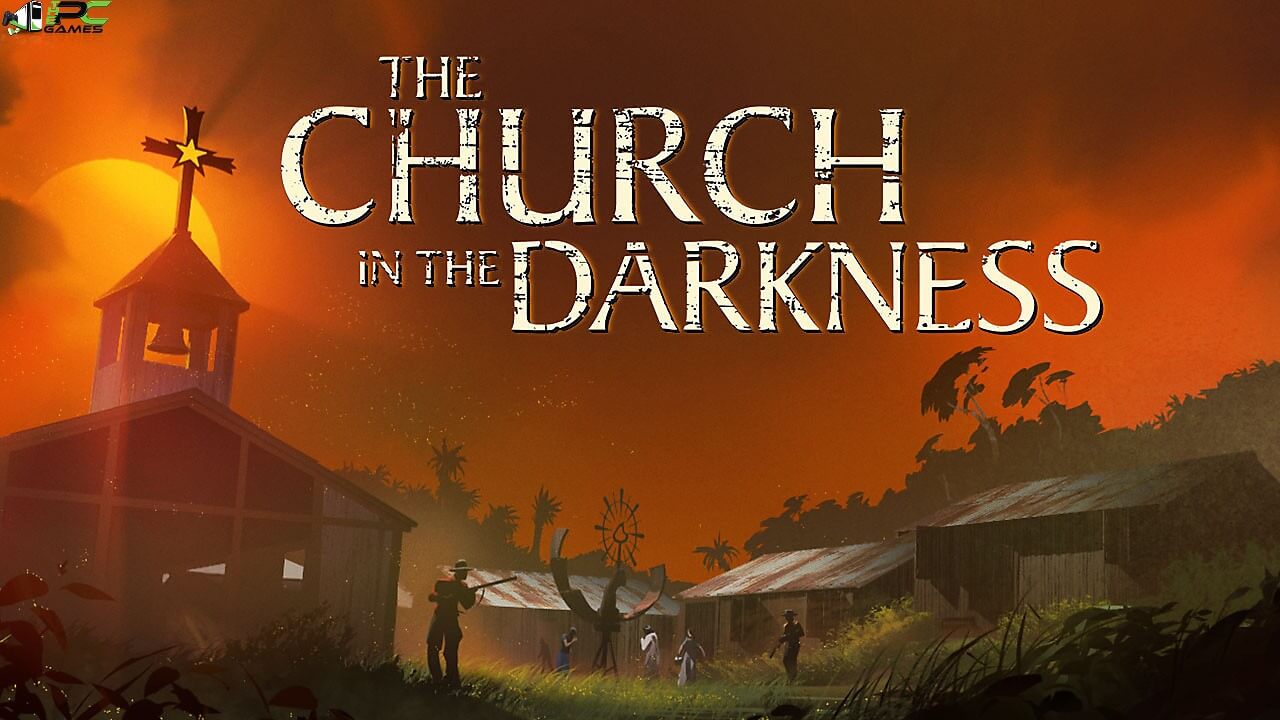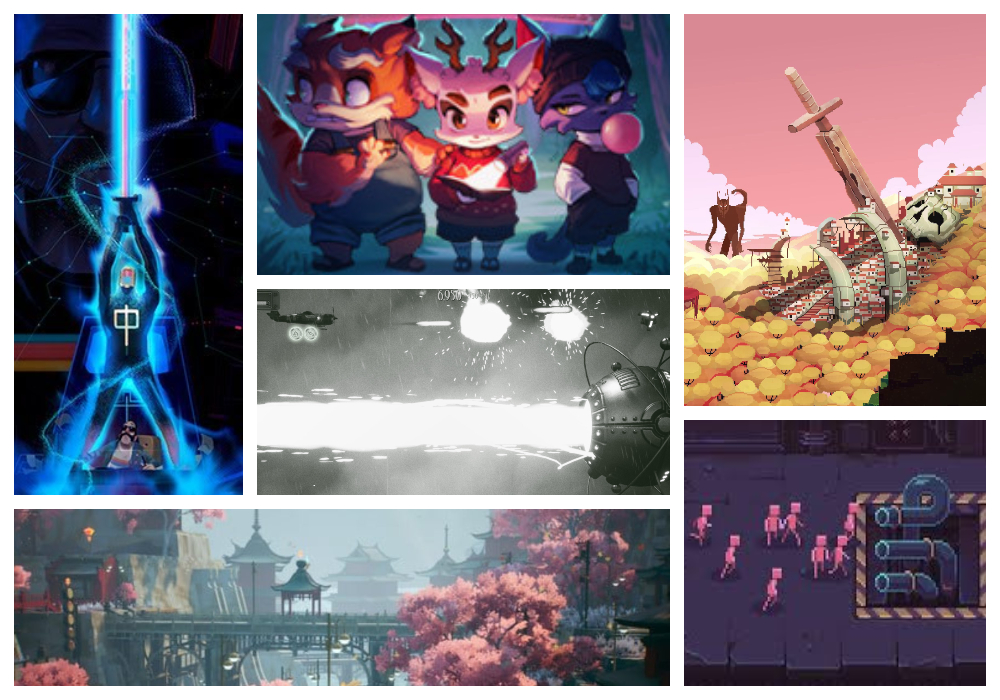Beacon Pines Review (Switch) – At A Loss For Words
Beacon Pines is a game where everything literally hinges on a single word. Charms you find in the world represent particular words that can then be used to pivot the action of a character and take the storybook narrative in an entirely new direction. On one level it’s the evolving story of a small town of anthropomorphic characters and in particular a few young kids as they uncover the creepy mysteries behind their town and the secrets of the people in it. Think Stranger Things with Sylvanians. But I say evolving for a reason.
On the next level, it’s an ever-changing, constantly-revealing, multi-branching narrative game that tasks you with completing not just your choice of story but most of its branches to uncover the information you need to progress in others. It’s a fourth-wall breaking novel and video-game rolled into one, playing out as a story that is writing itself (like Bastian’s book in the Never-Ending Story) but then finding the means to continue writing itself within the world of the story.
It’s going to take some explaining. Beacon Pines takes place as if it were a physical novel being read to you by the narrator. She will read the prose-based exposition and explanation, and then the watercolour illustrations will seep in from the edge and suddenly you’re in Beacon Pines itself.

You play as Luka, a 12-year-old anthropomorphic fawn boy and a resident of Beacon Pines, a small American town such as you might find in a Stephen King novel. Luka’s father died six years ago, and his mother is currently missing. His Gran has come to stay to look after him and keep him fed and out of trouble.
But ‘trouble’ is Luka’s middle name. He and his best friend Rolo, and their new friend Beck, are masters at it. From their treehouse to the derelict factory in the woods, from the creepy manor near town to the shops and library, they have free rein over the town and get up to mischief constantly.
It may sound trite to say the town is a character but Beacon Pines really earns that description. The town is on the cusp between past and future, brushing away the old benefactor family of the Valentines after the death of their patriarch some years back, and in the throws of regeneration with the Perennial Harvest company coming into town to rejuvenate everything. Coupled with the anthro characters you’d be forgiven for seeing a fair bit of Night in the Woods in its inspiration. Everything seems somewhat idyllic with the local paper and little bat reporter, the tired old dog mayor, the hyena entrepreneur trying to help struggling families. But just like in Castle Rock or Hawkins, it’s just the calm before the storm.
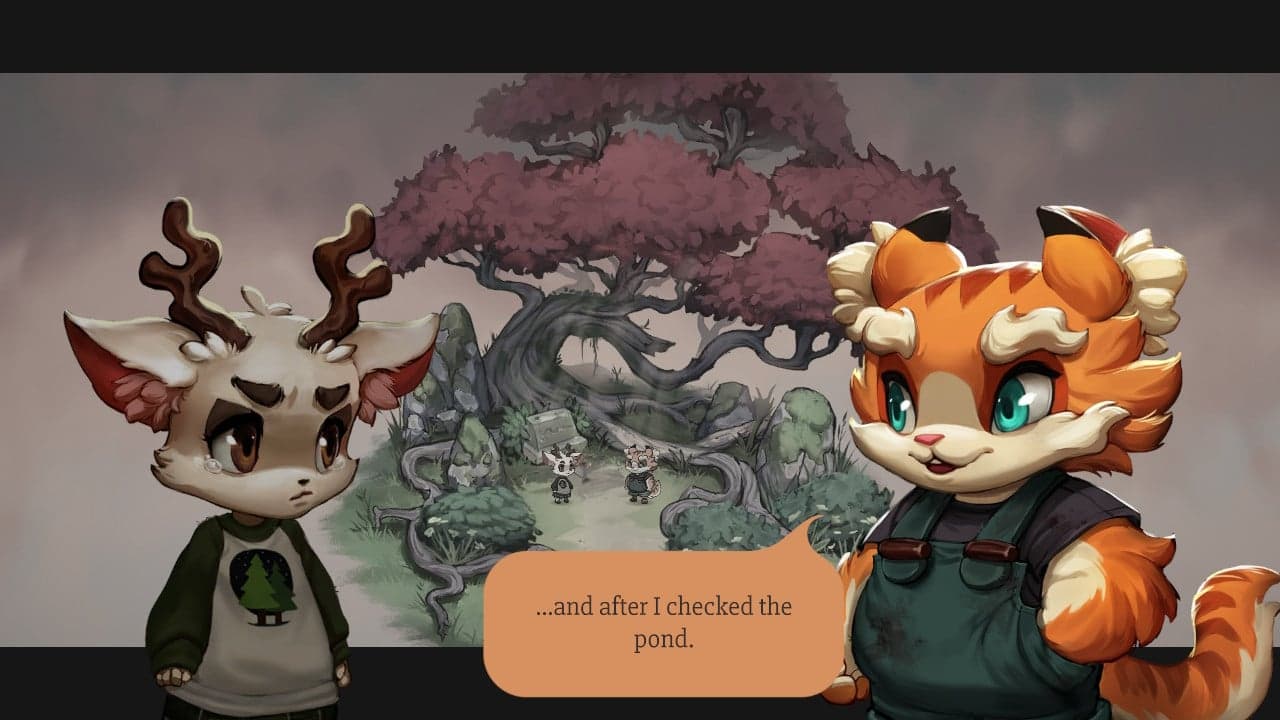
Out late one night, Luka and his friends unearth strange goings on at the abandoned factory in the woods. There’s something happening, people going in and out. They bump into someone in a hazmat suit with what looks like a bodybag, who tries to suddenly grab Luka and Rolo, and they only just get away with their lives.
Or do they? Well, as I’m going to explain, that’s only one route the early chapters can take. Change a single word during the decision sections, and Rolo goes missing, and the story follows on for a few hours searching for him and uncovering yet further mysteries. Or perhaps change an even earlier word choice and the kids find some glowing green goo that morphs and attacks organic matter. You can follow that story to its conclusion as if the other story didn’t happen.
Beacon Pines conceit is that you find words called Charms as you explore the diorama illustrations of the game’s world, and these words are then used to change the meaning of a sentence in the book of the game. When you change one word, the sentence can suddenly do something different, revealing new dialogue or prompting the characters to a different action or decision. These are called Turning Points. Beacon Pines won’t reveal itself to you in one go, you have to keep switching back, reliving sections to change the words and then pursue a new branch of the story to its conclusion.
You will regularly reach seeming dead ends in this choose-your-own-adventure. But a new word in a new place will completely change how a scene plays out, and reveal the way forward. You need to play most if not all of the routes to discover the path through. It’s kind of ingenious and really made me marvel at the planning that must have gone into the narrative, and the branching scene flow charts that probably exist in the studio.
You have something close to this to keep track as a player too. The Chronicle is the branching tree of word charms and turning points, and the game even helpfully marks them once they’ve been used, stopping you from impotently trying things over and over to no avail.
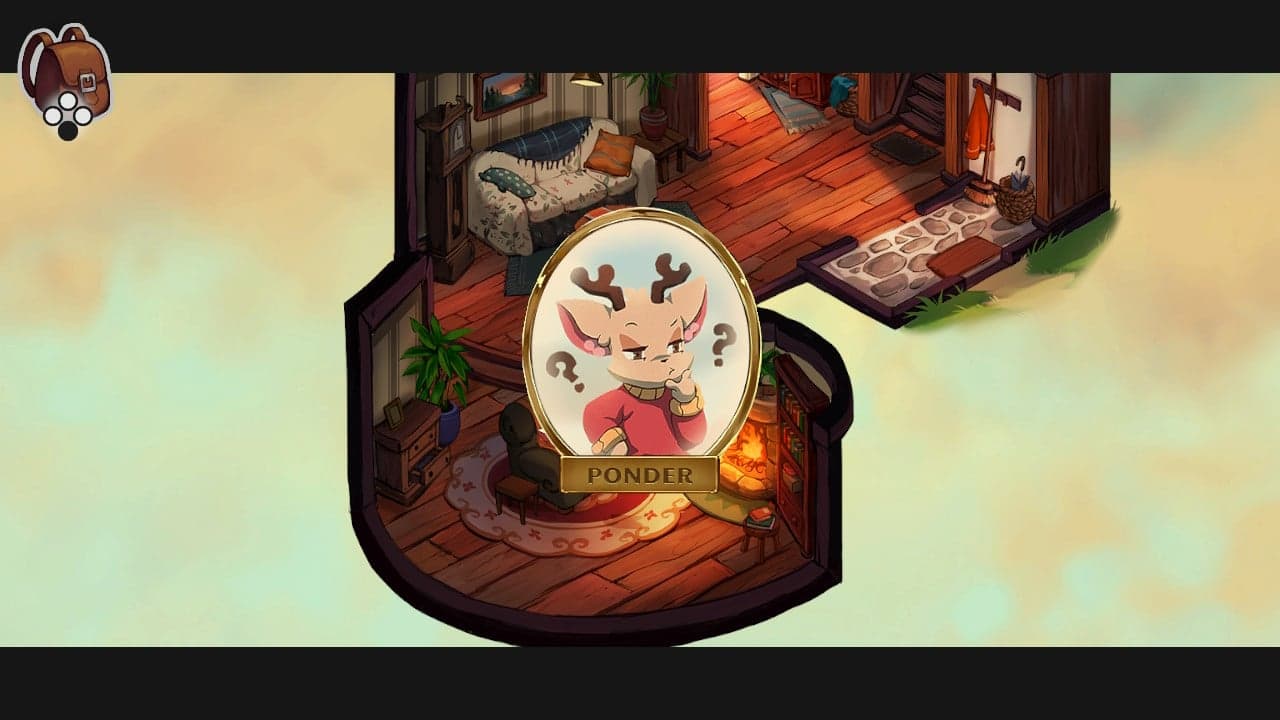
Chapter 2 is a tutorial of sorts, guiding you through the first minor turning point of no consequence, and then one that starts branching stories. It’s also what constituted the demo during last year’s Steamfest. Rolo’s sister Roxy is an obstacle to Luka and Rolo getting in trouble at the derelict factory I mentioned. You can use the only word charm you have at this point with her, and the story goes one way – Rolo getting sent home. But with Luka continuing on alone everything ends very abruptly in tragedy. But even in death, another Charm is revealed, and you can use this to go back, change Roxy’s mind and allow Rolo to accompany you, thereby changing your tragic fate.
Beacon Pines is like Stranger Things, but you get to play out each and every gruesome way the Hawkins kids could have died. You aren’t really trying to achieve one story as you are to experience every way this could have gone. Or maybe with hindsight it’s best to think of it as a collection of stories that just happened to have the same beginnings. The story of Luka and his new friend Beck is more like a summer kid’s movie, but it’s a very different story to where one kid gets green goo on them and transforms into a hideous monster.
You view each of these branches so that as a player you are getting the wider story of the town. The mystery of Beacon Pines, the mystery of the Foul Harvest and Luka’s dad six years ago, and the mystery of his mother’s disappearance. Finding out what’s up with Perennial Harvest and their interest in rejuvenating the town isn’t possible in one story route where Luka comes to a sticky end, but add that to the route where he’s able to explore an underground passage and you get the bigger picture.
It can be more than a little jarring to go from a dangerous and then tragic death scene, where you don’t have the words to escape your situation, back to the other branch or earlier, when none of the dangerous things happened. What’s jarring maybe is that it isn’t a time travel story, but it kinda feels that way. Luka doesn’t remember the different versions that the player does.
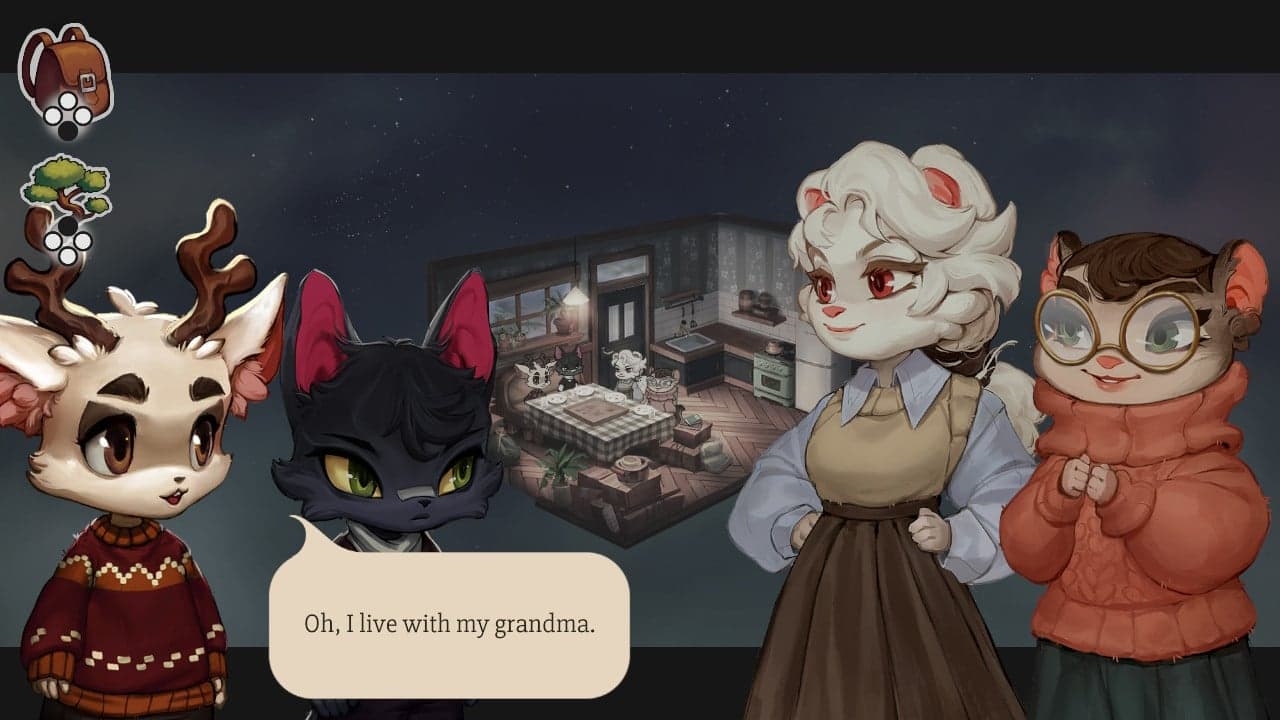
Beacon Pines just effortlessly oozes charm from the first moments opening its A.A. Milne-style pages, to its creepy Stranger Things with Sylvanians vibe. Everything plays out in intricate beautiful watercolour detail, in little illustrations that you can explore with Luka. Conversations for the most part employ a visual novel style with the character’s avatars on the left and right of the screen and written dialogue in the centre.
It’s a really beautiful game as these screenshots demonstrate, with some of the most expressively painted scenes and characters I’ve seen in a visual novel. Add to that the anthropomorphic style and the world of Beacon Pines comes to life like it’s a living nostalgic storybook you might remember from your childhood, only now there’s creepy goings-on afoot.
The narrator’s prose is voiced and read to you, but the characters all talk in a sort of sing-song burble like Zelda NPCs. I’m not sure if voiced characters would have added that much to the game overall, but bear it in mind if you don’t like to read much in games.
Beacon Pines is given even more of its atmosphere via the use of dynamic music that just seems to roll up on you in dramatic scenes without you noticing. Most of the music is a selection of piano ditties, lively ones, somber ones, mysterious ones – themes for exploring and reading text to, or tied to particular characters and locales, but all in keeping with the creepy/friendly tone of Beacon Pines. These continue as you read or explore, but then building imperceptibly, they can reach great crescendos as some dark secret is revealed.
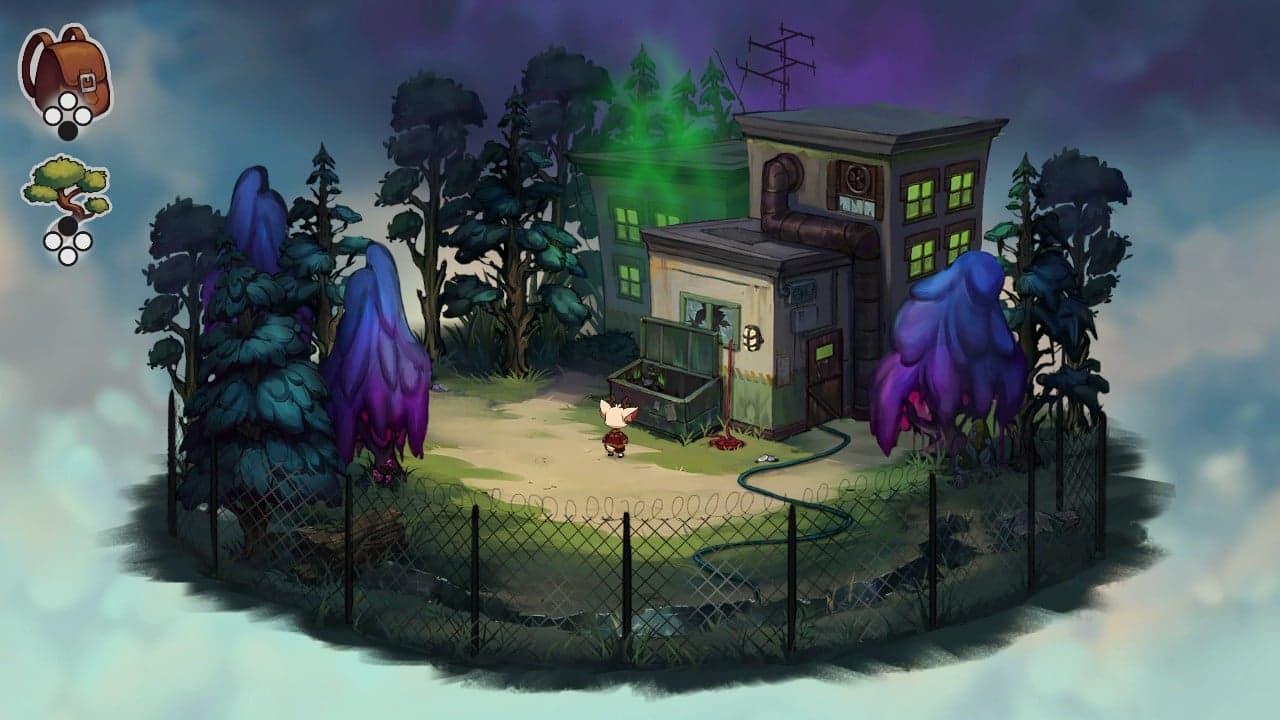
I’ll take a moment here to just spell out the small issues I did have. Generally, I felt confident that Beacon Pines was saving automatically as I went. There is no save function, but there is also no indicator at least on Switch, to show that the game has auto-saved your progress. Worrying I might lose progress I took to using the Switch’s great standby function and just resuming the game instantly.
There’s no real need to save progress, just maybe the turning points and charms you’ve already uncovered. You can’t die as such, that’s just the end of a particular story branch. However many of the turning points then lead to an hour or so of story before their inevitable end. It’s these where I wanted to be sure I could save, and not have to redo them from the turning point again. Helpfully the game does tick the ones you’ve completed.
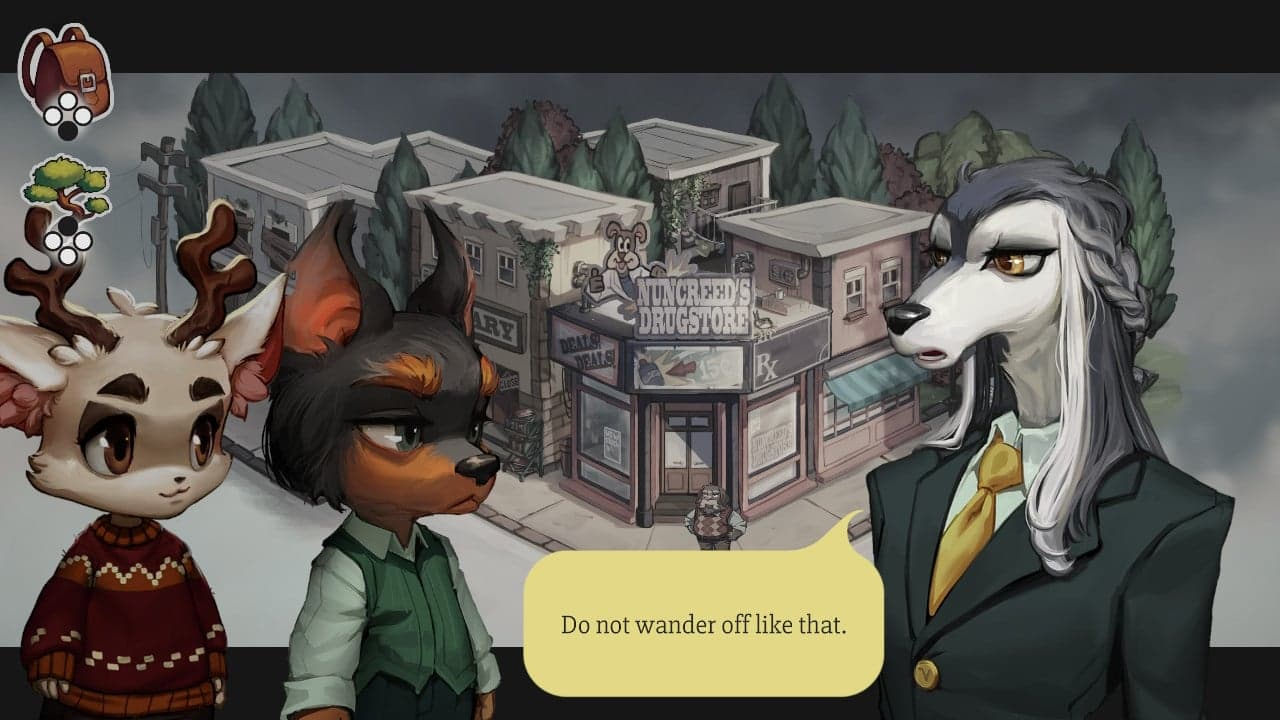
Beacon Pines is a game about narrative, and if you are looking for something with combat, platforming, shooting etc, this won’t be it. But for those this game is aimed at, it’s an absolute masterclass in writing interesting narratives that only really work in the interactive structures that video games allow.
I was compelled by character, by dialogue, and by intricate and constantly exciting plot points to uncover every last charm and every last route the story can take. You can only reach the longer stories and the deeper mysteries by going through the shorter tragic ones first and finding the words needed to reach further. But without the other branches on this tree being explored, the final route and the answers would not have the same gravitas.
You know the final mysteries are a big deal only because in one timeline they killed you, or in one timeline you explored just how important these people are to you as friends. Beacon Pines is as strongly written when dealing with family and the emotions of its young cast, as it is with the creepy goings-on, clandestine meetings and town-ending disaster.
I’ve mentioned Night in the Woods as a tonal inspiration here, but the game I was most reminded of was 13 Sentinels: Aegis Rim – that game revealed its massive time travel end of the world story over the course of multiple branching storylines and 13 different playable characters. Beacon Pines is similarly a game obsessed with its own narrative structure, and with uncovering every branch and every strand. The fun of these types of games is the actual narrative, the actual discovery of the plot and how it fits together, rather than any combat, quests or collectibles. As an avid reader, I was charmed by Beacon Pines and its deconstruction of narrative, and storybook format. It’s halfway between a game and a book, and leans hard into the strengths of both with incredible success.
As a straight story of Stranger Things meets Sylvanians, Beacon Pines is written beautifully, drawn evocatively, and compelling to play. But as a deconstruction of narrative that lets you rebuild your own story from the pieces, it’s stellar, captivating stuff. An unfettered joy from start to finish.

Beacon Pines is available now on Nintendo Switch (review platform), Xbox One and PC via Steam.
Developer: Hiding Spot
Publisher: Fellow Traveller
Disclaimer: In order to complete this review, we were provided with a promotional copy of the game. For our full review policy, please go here.
If you enjoyed this article or any more of our content, please consider our Patreon.
Make sure to follow Finger Guns on our social channels –Twitter, Facebook, Twitch, Spotify or Apple Podcasts – to keep up to date on our news, reviews and features.
